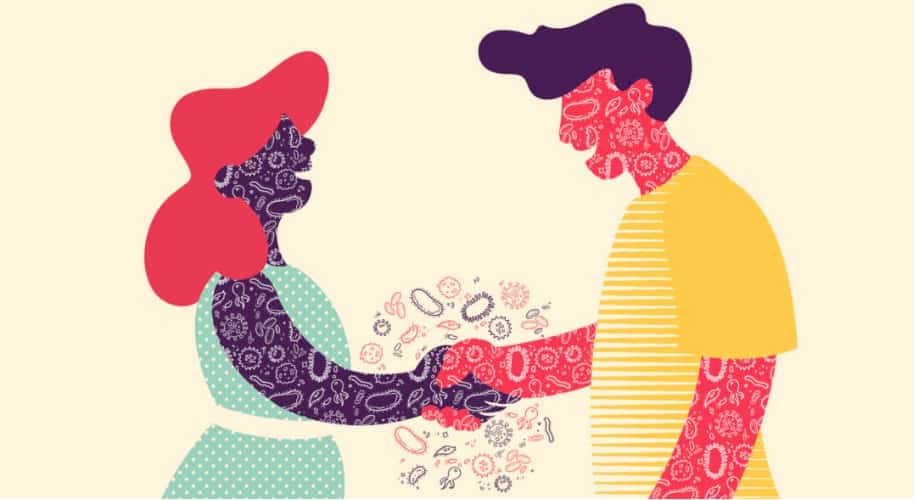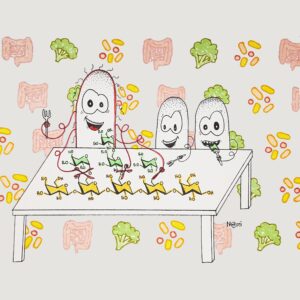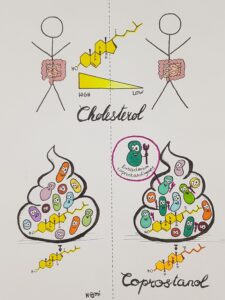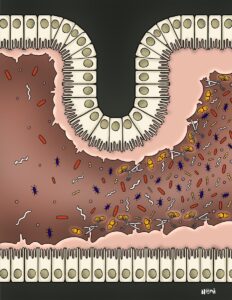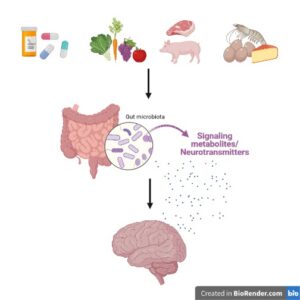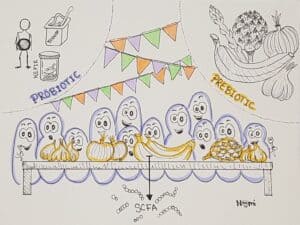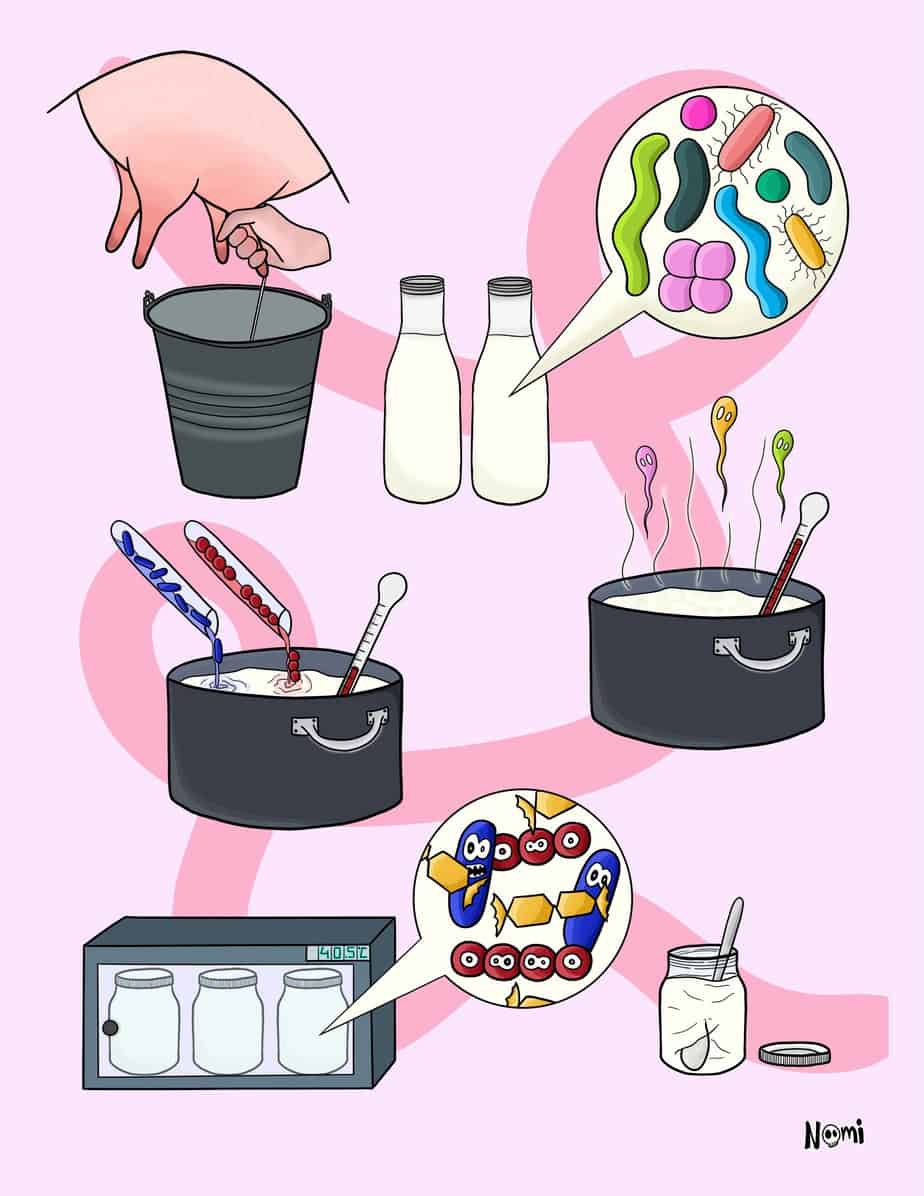How often do you think you exchange microbes with another surface when you touch something with your hands?
Maybe you don’t even notice, but the answer is every second of the day.
You touch your face when it itches. You touch surfaces in a house. Even when you lay down in bed, you touch your phone or the bed itself.
Remember that this is a microbial world, and microbes are everywhere: on us, in us, and around us. People and their skins interact with microbes. And microbes interact with us via our skin.
About the bacteria on your skin
The skin is the largest human organ. It acts as a barrier against intruding bacteria and pathogens.
With more discoveries in the field of the human microbiome, scientists figured out that our skin also has its own microbiome. The hand microbiome is particularly interesting for public health research since we often transmit diseases via our hands.
Plus, your index finger is your most used finger. Hence, it has the greatest variety of microorganisms.
So, if you think about it; hands are never REALLY clean and people touch A LOT of things all the time.
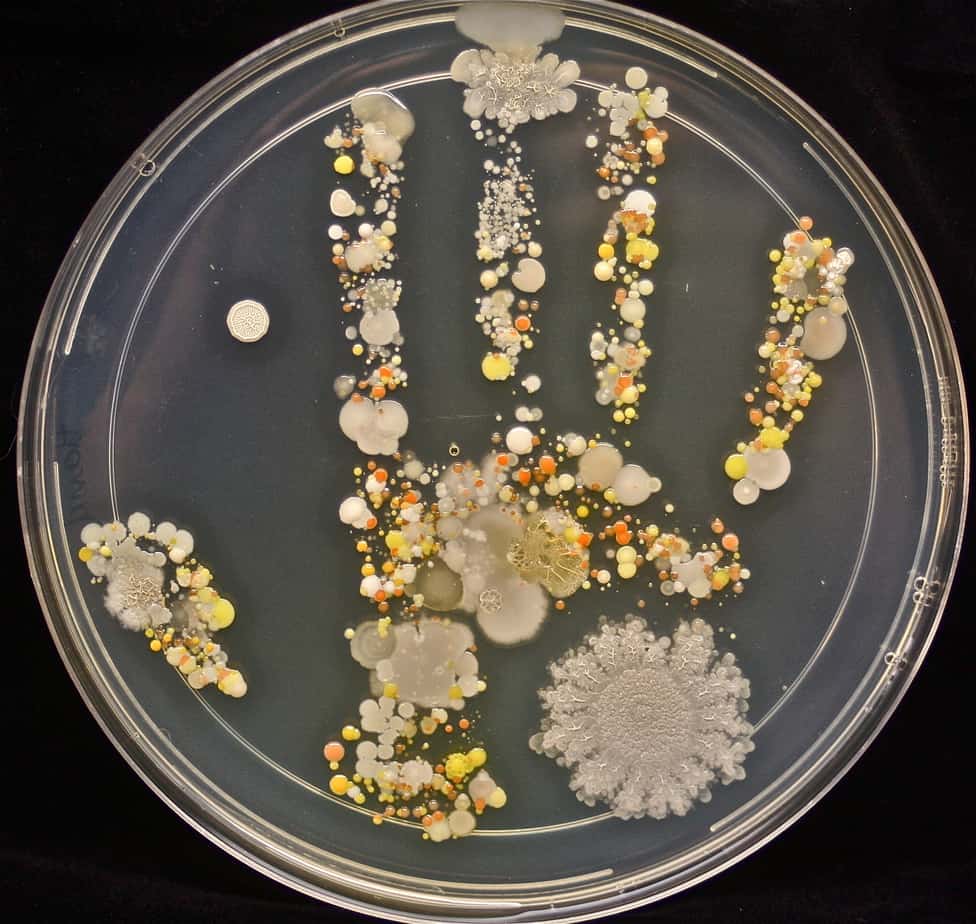
The day to day life of your hand microbiome
During the day, we and our hands interact with a lot of different environments. All these interactions impact our hand microbiome. This means that hands do not harbor a constant, unchanging microbial community; on the contrary, it changes pretty rapidly.
Therefore, scientists cannot specify or define what is a “healthy hand microbiome”. But, what we know is that the hand microbiome of every individual can have “good” (beneficial) and “bad” (pathogens) bacteria.
“Good” or “beneficial” bacteria are the ones that live in symbiosis with humans. This symbiotic relationship is known as mutualism. This means that both humans and bacteria benefit from interacting with each other. Bacteria protect against pathogens and support the host’s immune system. Humans provide the environment – the skin – and nutrients to help microorganisms grow.
“Bad” or “pathogenic” bacteria, on the other hand, come from the environment. They can cause diseases like acne because they know how to trick our immune system. That’s why we are taught to wash our hands to get rid of these types of bacteria and avoid getting sick.
When scientists looked at what the average hand microbiome could look like, they found that bacteria are the most common microorganism. Additionally, viruses and fungi are less common in the skin microbiome of our hands. They make up less than 5% of the found microorganisms.
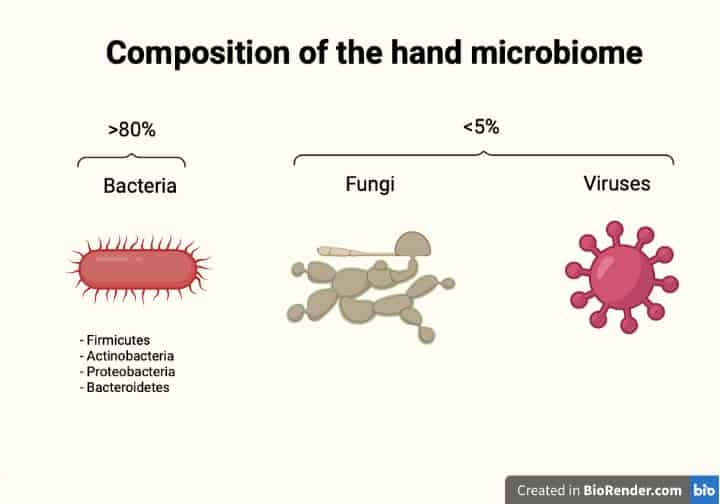
Factors influencing the skin microbiome of our hands
As we saw above, many factors influence what our hand microbiome looks like. And it turns out that your lifestyle has the greatest impact on your hand microbiome.
Just think about your diet, where and how you do exercises, or even about your job… All these factors impact which microbes settle down on your hands and become part of your skin microbiome.
And would you have thought that gender also influences the microbial community on your skin? Yes, it is proven that, overall, men and women have different bacterial profiles on their skin. No one knows why such a difference exists. It could be one of those things that distinguish men and women on a biological level.
Also, let’s not forget about external circumstances affecting your hand microbiome. Every time you step outside of your house, your skin microbiome changes.
Scientists also found that members living in the same household have similar hand microbiomes. So, even though every individual has their own unique collection of microorganisms on their hands, living in the same space makes them more similar to one another.
Additionally, if you own a dog, your hand microbiome and microbial community on your pet’s paws become more similar to one another. By interacting with your pet throughout the day, the microbes on your hands can exchange with those on your pet. Who knew that pet ownership can increase the diversity of bacteria on your hands?
Many different microorganisms live on our personal belongings, like cell phones and keyboards. These microbes likely come from our skin microbiome because those objects are, by far, the most touched throughout the day. Some scientists even think of introducing microbiome analyses of personal objects as an alternative to human DNA forensic investigations.
How can studying the skin microbiome help us?
Hands are like busy intersections, connecting our microbiome with the microbiomes of other people, places and things. Even a slight interaction with an inanimate object in your house can change what your hand microbiome looks like.
So, what can we learn from studying the hand microbiome? Our hand microbiome is like a second fingerprint. Hence, experiments in this field can uncover information on how to use a hand microbiome as a diagnostic tool.
Such a microbial tool would speed up the diagnosis process! By building general microbial profiles of every patient, doctors would be able to target only those areas that need immediate attention. And this would mean fewer prescriptions of broad-spectrum medications!

